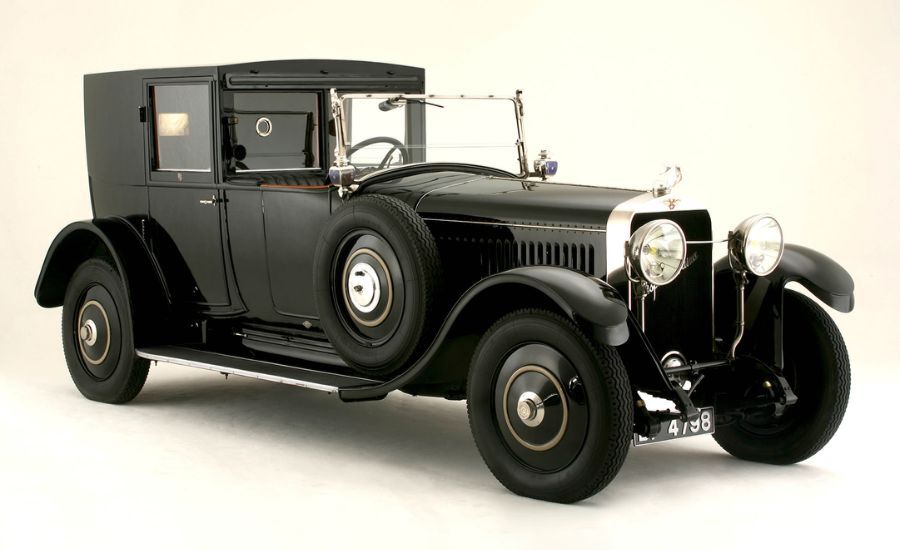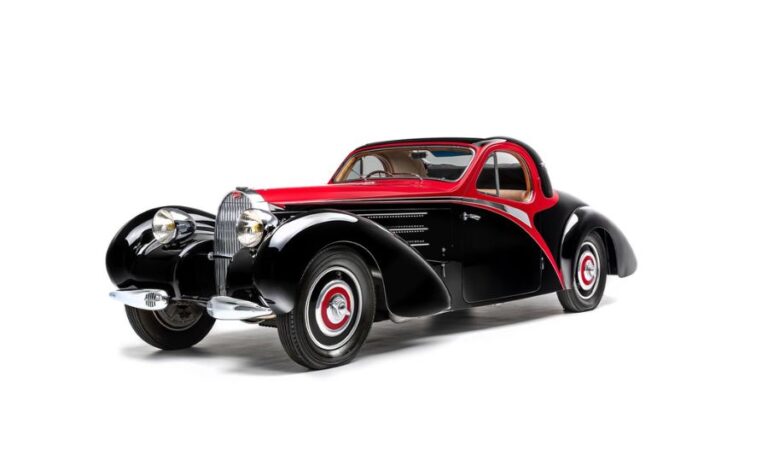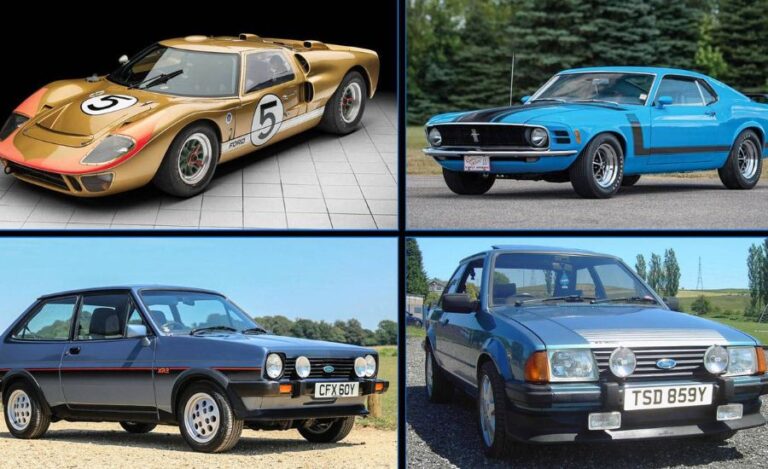Hispano Suiza H6b Laboudette Torpedo Side View, Historical, French & More
Introduction to Hispano Suiza H6b Laboudette Torpedo Side View
The 1922 Hispano-Suiza H6B Labourdette Torpedo is a timeless icon of early 20th-century luxury and innovation. Renowned for its impeccable engineering and groundbreaking design, this masterpiece represents the epitome of automotive elegance during its era. In this article, we’ll delve into the historical significance, technical features, and the artistry behind its creation, highlighting its distinctive torpedo-style body designed by the esteemed French coachbuilder Henri Labourdette.
A Fusion of Performance and Design
The Hispano-Suiza H6B was celebrated as one of the most luxurious and technologically advanced cars of its time. Equipped with a powerful 6.6-liter inline six-cylinder engine, derived from Hispano-Suiza’s expertise in aero-engine development, the H6B offered remarkable performance for the 1920s. This engine not only delivered exceptional speed but also solidified Hispano-Suiza’s reputation for crafting vehicles that combined power with precision.
What truly set the 1922 H6B apart was its innovative torpedo-style body, designed by Henri Labourdette. Inspired by the sleek profiles of boats, the Labourdette Torpedo featured a streamlined silhouette that reduced air resistance, enhancing both performance and visual appeal. From a side view, the car’s elongated and graceful profile showcased an artistic blend of aerodynamics and sophistication, making it a standout among luxury automobiles of the era.
The History Behind the Hispano-Suiza H6B
Hispano-Suiza, originally established as a Spanish-Swiss company, became synonymous with luxury and innovation in the early 1900s. By the 1920s, the brand had cemented its reputation as a premier automaker, known for integrating aviation-grade engineering into its vehicles. The H6B, introduced in 1922, exemplified this ethos with its aircraft-inspired engine and groundbreaking design.
Henri Labourdette, a visionary French coachbuilder, brought his expertise to the H6B, creating the distinctive Torpedo body. This design, inspired by nautical forms, gave the car a sleek and futuristic appearance that was both functional and stylish. The smooth, elongated contours of the Labourdette Torpedo reduced drag, making the H6B faster and more efficient than its contemporaries.
Design Highlights: The Timeless Elegance of the Hispano-Suiza H6B Labourdette Torpedo
When viewed from the side, the 1922 Hispano-Suiza H6B Labourdette Torpedo reveals the true artistry of its design. This luxury automobile, with its polished wooden body and flowing lines, is a perfect blend of form and function, showcasing both aesthetic beauty and aerodynamic efficiency.
Streamlined Torpedo Body
The elongated, sleek body of the H6B was inspired by the contours of high-end yachts, giving it a nautical elegance. The wide fenders and smooth curves emphasize the car’s streamlined profile, reducing wind resistance and enhancing its speed and performance. This innovative design gave the car a dynamic and sophisticated appearance that was ahead of its time.
Open-Top Sophistication
The Labourdette Torpedo’s open-top design exudes sportiness while complementing its low-slung stance and elongated shape. This feature not only adds to its visual allure but also reinforces its identity as a car that blends luxury with the thrill of driving.
Meticulous Handcrafted Craftsmanship
Every detail of the H6B Labourdette Torpedo was meticulously crafted by hand, reflecting the extraordinary skill and artistry of the 1920s. From the gleaming wooden panels to the intricately polished chrome accents, the car is a testament to the expertise of its creators. Its side profile showcases the level of precision and attention to detail that was synonymous with high-end automobiles of that era.
The Hispano-Suiza H6B Labourdette Torpedo remains a symbol of excellence, embodying innovation and craftsmanship that continue to captivate collectors and enthusiasts nearly a century later.
Performance That Matches the Elegance
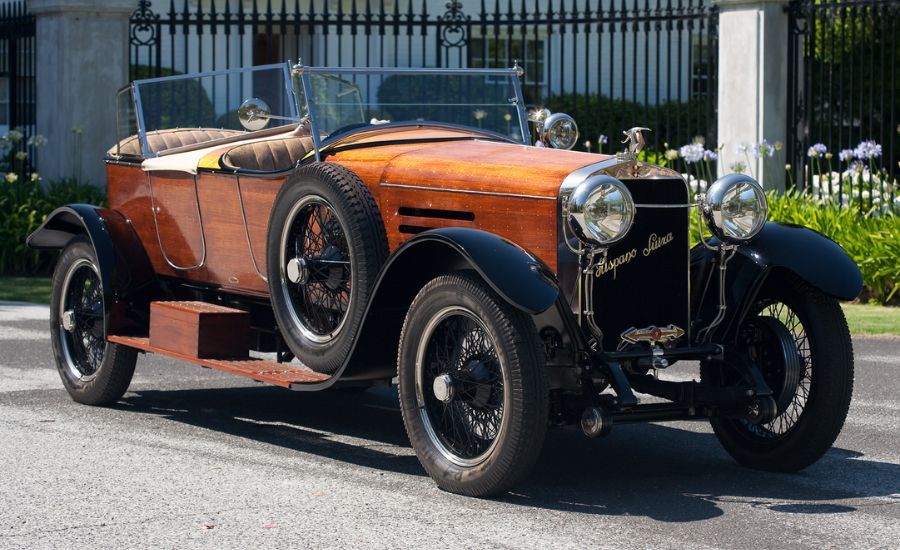
The 1922 Hispano-Suiza H6B Labourdette Torpedo was a remarkable blend of luxury and speed, capable of rivaling the best cars of its era. Powered by a 6.6-liter inline six-cylinder engine delivering 135 horsepower, this vehicle was among the fastest luxury cars of its time. Its advanced chassis and a smooth three-speed manual gearbox provided exceptional handling and driving comfort.
From a side view, the car’s design speaks volumes about its performance capabilities. The streamlined shape reduced aerodynamic drag, while the lightweight wooden body enhanced agility, enabling the car to glide effortlessly on the road. This seamless integration of design and engineering created a vehicle that was as exhilarating to drive as it was captivating to behold.
Legacy of the 1922 Hispano-Suiza H6B Labourdette Torpedo
The Hispano-Suiza H6B Labourdette Torpedo is celebrated as a pinnacle of automotive history. A cherished collector’s item, it embodies the perfect synergy of luxury, innovation, and artistry. Today, the car graces prestigious automobile exhibitions, where its side profile continues to astonish admirers and enthusiasts.
For collectors and automotive historians, the H6B represents an era when cars transcended mere transportation and became works of art. Its side view, with its harmonious curves and handcrafted excellence, remains an enduring symbol of sophistication and ingenuity in early luxury automobile design.
A Closer Look at the Side Profile
The side profile of the 1922 Hispano-Suiza H6B Labourdette Torpedo is arguably its most captivating feature. The torpedo-style body, characterized by a long hood, smooth curves, and low-slung silhouette, evokes a sense of speed even when the car is stationary.
The flowing side panels extend seamlessly from the elongated hood to the rear, culminating in a gracefully integrated tail section. This aerodynamic design not only improved the car’s performance by reducing drag but also enhanced its visual appeal.
The handcrafted Labourdette Torpedo body utilized lightweight materials, allowing the car to maintain its luxurious features while delivering outstanding performance. This meticulous attention to detail and functionality solidifies the H6B’s reputation as a masterpiece of early automotive engineering.
Henri Labourdette: The Visionary Behind the Torpedo Body
Henri Labourdette, a celebrated coachbuilder of the early 20th century, played a pivotal role in crafting the 1922 Hispano-Suiza H6B. His groundbreaking Torpedo body design revolutionized luxury automobiles by merging artistic elegance with functional aerodynamics.
Labourdette incorporated innovative materials like aluminum to construct the lightweight body panels, which improved both the car’s speed and efficiency. The streamlined design wasn’t just visually stunning—it was also practical, enhancing high-speed performance. Labourdette’s work on the Hispano-Suiza H6B solidified his reputation as a pioneer in automotive design.
The Engineering Mastery of Hispano-Suiza
Hispano-Suiza was a trailblazer in integrating aviation technology into automobiles. The H6B’s engine, for example, was derived from aircraft designs used during World War I, making it exceptionally powerful and reliable for its time.
In addition to the advanced engine, the H6B boasted servo-assisted brakes, a first for production cars. This innovation significantly improved braking performance and safety, setting Hispano-Suiza apart from its competitors and securing its place as a leader in automotive engineering.
The Collaboration Between Hispano-Suiza and Labourdette
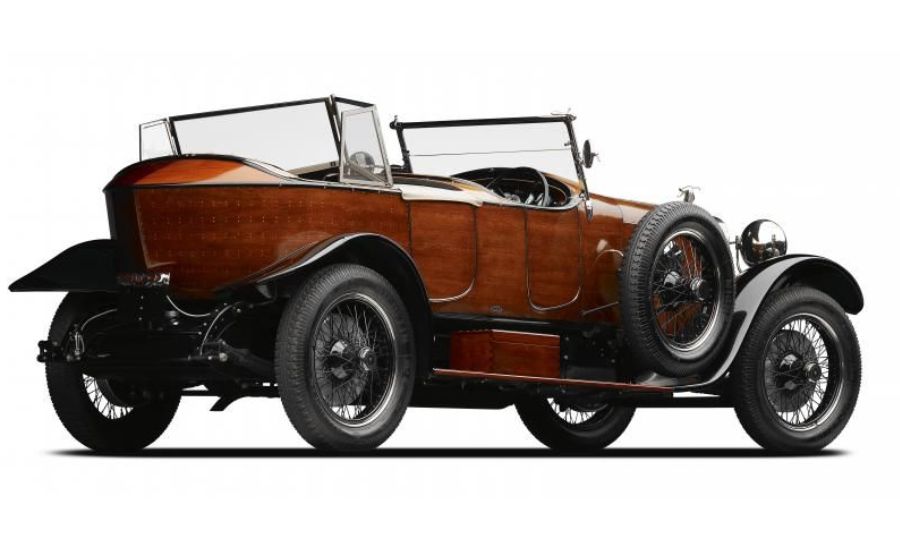
The partnership between Hispano-Suiza and Henri Labourdette was transformative in the automotive industry. Labourdette’s focus on weight reduction and aerodynamic efficiency complemented Hispano-Suiza’s emphasis on robust engineering and performance. Together, they created a vehicle that not only looked magnificent but also excelled in functionality and speed.
Their collaboration set new benchmarks for luxury cars, showcasing the potential of blending exceptional craftsmanship with advanced engineering.
Driving the H6B: A Unique Experience
Driving the 1922 Hispano-Suiza H6B was an extraordinary experience. Its powerful engine, combined with a lightweight design and cutting-edge brakes, made it one of the most responsive and enjoyable cars of its era.
The aerodynamic Torpedo body reduced wind resistance, enhancing the car’s agility and allowing it to reach impressive speeds with ease. Despite its size, the H6B was remarkably nimble, offering a smooth and exhilarating ride.
Distinctive Features of the H6B
The 1922 Hispano-Suiza H6B Labourdette Torpedo boasted numerous unique features that set it apart from other luxury cars of its time:
- Aerodynamic Torpedo Body: Labourdette’s sleek design provided the H6B with a modern and elegant look that emphasized speed.
- Innovative Braking System: The servo-assisted brakes offered superior control and safety, a groundbreaking feature in the 1920s.
- Exquisite Craftsmanship: Every detail, from the plush leather interior to the intricately designed dashboard, reflected meticulous attention to detail.
- Aviation-Inspired Engine: The airplane-derived engine delivered unparalleled performance, making the H6B a true engineering marvel.
Legacy of the 1922 Hispano-Suiza H6B
The Hispano-Suiza H6B Labourdette Torpedo remains an icon of luxury, innovation, and artistry. Revered by collectors and automotive enthusiasts, this car epitomizes the golden age of automotive design.
Today, the H6B is showcased at prestigious automotive events, where it continues to captivate audiences with its timeless elegance and groundbreaking engineering. This car stands as a testament to a time when automobiles were more than just transportation—they were works of art.
Technical Specifications of the 1922 Hispano-Suiza H6B
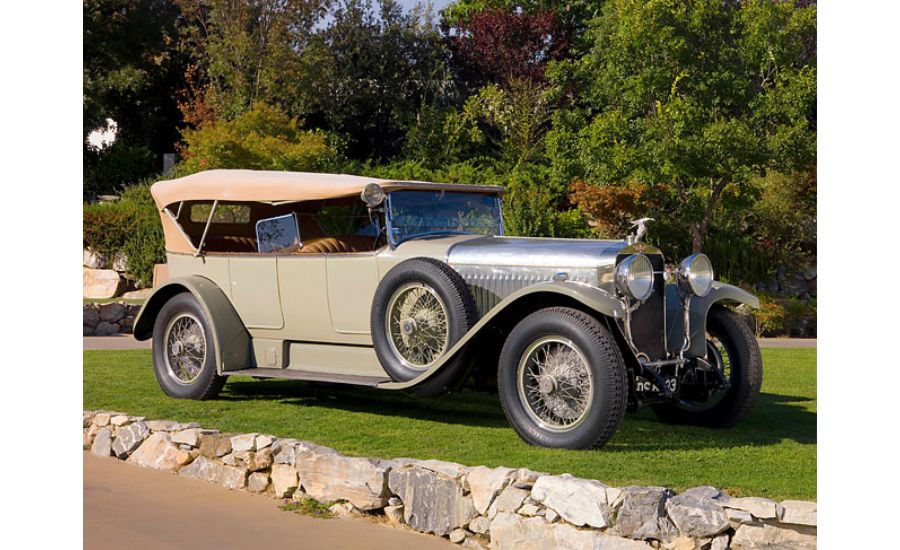
The 1922 Hispano-Suiza H6B was a groundbreaking luxury automobile, powered by a 6.6-liter inline-six engine. This engine drew inspiration from the Hispano-Suiza V8 aero engine used in World War I fighter planes, showcasing the brand’s innovative use of aviation technology in automobiles. Delivering 135 horsepower, the H6B could achieve a top speed of 80 mph—a remarkable performance for its time.
Key Specifications
- Engine: 6.6-liter inline 6-cylinder
- Horsepower: 135 HP
- Top Speed: 80 mph (128 km/h)
- Body Style: Torpedo by Henri Labourdette
- Transmission: 3-speed manual
- Wheelbase: 142 inches (3,607 mm)
The car’s lightweight torpedo body, designed by the renowned French coachbuilder Henri Labourdette, further enhanced its speed and agility. The streamlined design not only contributed to its visual elegance but also reduced drag, making it one of the fastest and most responsive luxury vehicles of its era.
Summary: The 1922 Hispano-Suiza H6B Labourdette Torpedo
The Hispano-Suiza H6B Labourdette Torpedo remains a symbol of luxury, innovation, and craftsmanship in the automotive history of the 1920s. Known for its sleek and aerodynamic torpedo body by Henri Labourdette, the vehicle combined aesthetic brilliance with advanced engineering derived from wartime aviation technology.
Powered by a 6.6-liter inline-six engine producing 135 horsepower, the H6B was capable of reaching speeds up to 80 mph. This performance was complemented by a lightweight, open-top design with a low-profile silhouette that exuded elegance and sportiness.
A key feature of the H6B was its servo-assisted braking system—a cutting-edge innovation for the time—which enhanced safety and control. The collaboration between Hispano-Suiza and Labourdette delivered a vehicle that not only set benchmarks for performance but also embodied the opulence and hand-crafted artistry of the 1920s.
Today, the Hispano-Suiza H6B Labourdette Torpedo is celebrated among classic car enthusiasts as an iconic representation of the golden age of motoring, a time when vehicles were both technological marvels and works of art.
FAQs About the 1922 Hispano-Suiza H6B Labourdette Torpedo
1. What makes the Hispano-Suiza H6B Labourdette Torpedo unique?
The 1922 Hispano-Suiza H6B Labourdette Torpedo is unique for its blend of advanced engineering and artistic design. It features a lightweight, streamlined torpedo body by Henri Labourdette, inspired by aviation technology, and is powered by a 6.6-liter inline-six engine delivering 135 horsepower.
2. Why is Henri Labourdette important in the history of luxury cars?
Henri Labourdette was a renowned coachbuilder known for his innovative designs that combined aesthetics with functionality. His work on the H6B revolutionized car design by emphasizing aerodynamics and lightweight materials, setting new standards for luxury automobiles.
3. What was the top speed of the Hispano-Suiza H6B?
The H6B could reach an impressive top speed of 80 mph, making it one of the fastest luxury cars of its time.
4. How did Hispano-Suiza integrate aviation technology into their cars?
Hispano-Suiza adapted their experience in aircraft engine design to their automobiles. The H6B’s 6.6-liter engine was inspired by their V8 aero engines used during World War I, offering exceptional power and reliability.
5. What safety features did the H6B have?
The H6B introduced servo-assisted brakes, a first for production cars, significantly enhancing stopping power and safety.
Fascinating Facts About the Hispano-Suiza H6B
- Aviation Roots: The engine design was derived from Hispano-Suiza’s aircraft engines, demonstrating the brand’s mastery in precision engineering.
- Coachbuilding Pioneer: Henri Labourdette’s torpedo body was not just a design marvel but also a functional innovation, reducing drag for better performance.
- Luxury Meets Innovation: The H6B was hand-built with meticulous attention to detail, featuring high-quality leather interiors and intricate dashboard instruments.
- Ahead of Its Time: The introduction of servo-assisted brakes in the H6B set a precedent for safety in luxury cars.
- Collector’s Dream: Today, the 1922 Hispano-Suiza H6B is a rare and highly sought-after collector’s item, often displayed at prestigious automotive events.
- Timeless Design: The torpedo body’s streamlined silhouette and open-top configuration remain iconic symbols of 1920s automotive elegance.
These FAQs and facts underline why the Hispano-Suiza H6B Labourdette Torpedo continues to captivate car enthusiasts and historians alike. It stands as a testament to an era when luxury and innovation went hand in hand.
For more Information About cars visit idealrular
